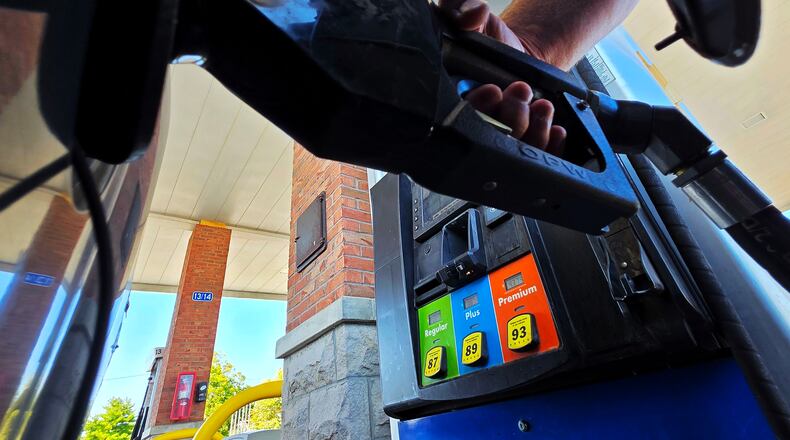The recent spike in gas prices can be traced to an outage at the BP Whiting Refinery in northwest Indiana, according to Patrick De Haan, head of petroleum analysis at GasBuddy.
The facility was hit by severe weather last week, including five inches of rain in just a few hours and intense lightning. The resulting several feet of standing water flooded the refinery, leading to a temporary shutdown.
“It took them about five (or) six days just to get some of that flood water completely pumped out and only now is that refinery in the process of restarting,” De Haan said. “They should be pretty close to full capacity.”
That shutdown caused dramatic price jumps in Ohio, Indiana, Illinois, Michigan and Wisconsin, five states he said are “absolutely pulling up the national average in a significant way.”
The average price for a gallon of gas in Ohio was $3.35 as of Tuesday morning, according to GasBuddy. That was 36 cents more than a week earlier ($2.99) 26 cents more than a month ago ($3.10) and 13 cents more than a year ago ($3.22).
While some stations in the Hamilton, Middletown, Dayton and Springfield areas still had gas priced below $3 a gallon Tuesday afternoon, and others as much as $3.49 a gallon, the average price was $3.35, GasBuddy data showed.
Gas prices this summer have remained low, matching summer averages in 2021, AAA said. Last year, the national average for a gallon of regular was $3.33 on Labor Day.
The national average for a gallon of regular gasoline had dropped to $3.13 by Aug. 21, the lowest price recorded on that date since 2020, when the average was just $2.18, AAA said.
The recent spike in gas prices is part of a broader pattern known as price cycling, which De Haan said is at play this week.
With price-cycling, gas stations steadily lower prices to undercut competitors, overlooking small market changes daily until their profit margins run thin, he previously said. When that is no longer profitable, they raise prices by 25 to 40 cents per gallon to maintain profit margins of 15 to 20 cents per gallon, De Haan said.
“It was a price cycle that was enhanced by the refinery outage,” he said. Without the outage, prices would have cycled to $3.29 instead of $3.49. “This added another 20 cents on top of what would have normally happened anyway.”
De Haan expects relief at the pump as early as this Monday’s holiday.
“I think the national average at $3.19 (Tuesday) will probably slip back down to $3.15 by Labor Day,” he said, predicting it could be “the cheapest Labor Day since 2020.”
He said consumers should shop around before hitting the road and avoid filling up at peak prices, as “you could see 10- to 30-cent drops between now and Labor Day in Dayton” and other communities throughout Southwest Ohio.
De Haan said he anticipates further declines following Labor Day, including most stations falling below that $3 gallon mark,” he said.
With the switch to cheaper winter gasoline in mid-September and cooler weather ahead, De Haan said he expects cycle peaks to gradually lower.
“Next time (there’s a price cycle), it won’t be $3.49, it might be $3.29 or $3.19 … and as we get closer to Christmas, the cycle amounts might jump up to $2.99,” he said. “The cycle amounts should be slow decreasing.”
Besides all signs pointing to gas prices stabilizing heading into the holiday weekend, flights, hotels and car rentals are cheaper this Labor Day weekend compared to last year, according to AAA.
Stacey Barber, vice president of AAA Travel, said Labor Day caps off summer travel and provides one final holiday weekend before the fall routine begins.
“While some people are going on dream cruises or European vacations, many travelers are staying closer to home and taking road trips to nearby beaches or national parks,” Barber said in a statement.
Those heading to the airport for a domestic roundtrip flight are finding them to be 6% cheaper compared to last year, averaging $720 a ticket, according to AAA. Those traveling internationally this Labor Day weekend are facing a “mixed bag” of sorts: While hotels are 2% cheaper, airfare is 8% more expensive.
About the Author


